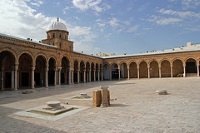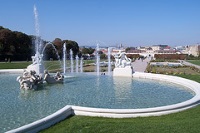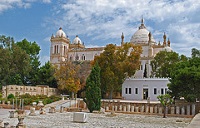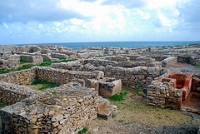Things to do in Tunis
Largely ignored by the package tourists who flock to the seaside resorts of Tunisia, the capital city of Tunis is a vibrant and fascinating metropolis that provides many attractions for holiday makers in Northern Africa. Tunisia is a unique blend of Eastern and Western culture, and nowhere is this more evident than in Tunis. The city is home to beautiful religious structures of several faiths, including the famous Zitouna Mosque and the Cathedral of St Vincent de Paul, as well as several historic city gates, such as the Bab el Bahr and Bab Saadoun, dating back to the 14th century.
Tunis also has several interesting museums, including the Bardo Museum, which has extensive collections of artefacts ranging from the prehistoric era to the Ottoman Period. The Early Christian Museum also has fascinating exhibits. Visitors will find that the souks and markets are wonderful places to pick up lovely souvenirs or simply do a bit of wandering, though the crowds and noise can be overwhelming. Tourists can take refuge in Belvedere Park, a large, leafy area set on Lake Tunis with museums, cafes, and a zoo.

Zitouna Mosque
The largest mosque in Tunisia, the Zitouna Mosque dates back to the 8th century; the 160 columns of the mosque were brought from the ruins of Carthage. Set in the heart of Tunis, t…
Zitouna Mosque
The largest mosque in Tunisia, the Zitouna Mosque dates back to the 8th century; the 160 columns of the mosque were brought from the ruins of Carthage. Set in the heart of Tunis, the mosque was improved upon almost continually until the 19th century, when the minaret was added. Zitouna (or Al-Zaytuna) was the centre of learning and intellectual pursuits in Tunisia, and is considered the first Islamic university. Visitors to the Zitouna Mosque must dress modestly, and non-Muslim guests may only enter the courtyard. The mosque is surrounded by bustling souks on three sides.

Belvedere Park
Tunis' largest parks, Belvedere Park covers 270 acres (110 ha) just north of the city. Known as the 'Lungs of Tunis' due to the scarcity of green spaces in the city, Belvedere Park…
Belvedere Park
Tunis' largest parks, Belvedere Park covers 270 acres (110 ha) just north of the city. Known as the 'Lungs of Tunis' due to the scarcity of green spaces in the city, Belvedere Park has a number of family-friendly attractions to enjoy on fine days in Tunis. Children will love the Tunis Zoo, a pleasant facility with monkeys, bears, deer, peacocks, and elephants, while adults will marvel at the intricately decorated high-domed ceilings of the Turkish Pavilion. Belvedere Park has an art gallery featuring local contemporary works near the entrance gate, and when the weather is hot, visitors can cool off in the shade of trees overlooking Lake Tunis on Place Pasteur.

Carthage
Carthage was the base of a powerful trading empire during the Phoenician and Punic periods and was famously led militarily by the general Hannibal during the Punic Wars. Destroyed …
Carthage
Carthage was the base of a powerful trading empire during the Phoenician and Punic periods and was famously led militarily by the general Hannibal during the Punic Wars. Destroyed by the Romans in 146 BC at the end of the Third Punic War, the city was later rebuilt about a century afterward and became the Roman provincial capital. Located roughly nine miles (15km) north of Tunis, the remaining ruins of ancient Carthage were declared a UNESCO World Heritage Site in 1979. Visitors can buy a ticket for a few dinars that grants access to multiple archaeological sites, including the Antonin Baths, Amphitheatre, Water Cisterns, Basilica of Saint-Cyprien, Punic Tophet, and the Carthage Museum. Also nearby is the Acropolium (St Louis Cathedral), a stunning 19th-century cathedral.

Kerkouane
Approximately 50 miles (80km) east of Tunis lies Kerkouane, a former city of the Phoenician and Punic periods. The city was abandoned around the 3rd century BC, which meant it was …
Kerkouane
Approximately 50 miles (80km) east of Tunis lies Kerkouane, a former city of the Phoenician and Punic periods. The city was abandoned around the 3rd century BC, which meant it was largely ignored by the conquering Romans and is today the only remaining untouched Punic settlement. The city was declared a UNESCO World Heritage Site in the 1980s. The remains of Kerkouane and its famous necropolis are not large, and can be explored in about an hour. Visitors can look for the distinctive minimalist mosaics of the Punic god Tanit, and learn about the city's surprisingly modern town planning. A small museum housing interesting relics and artefacts gives further insight into the history of Kerkouane.



